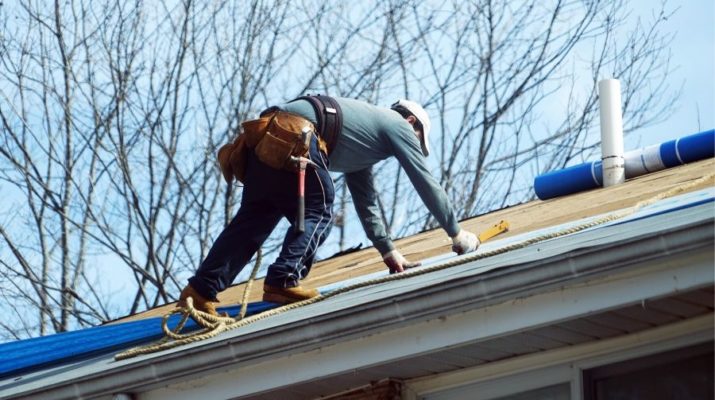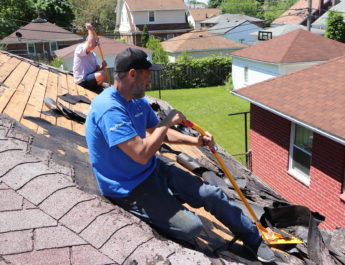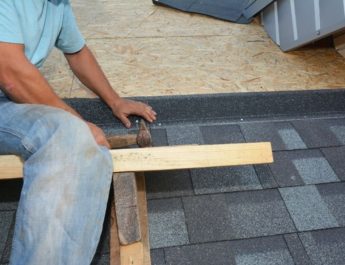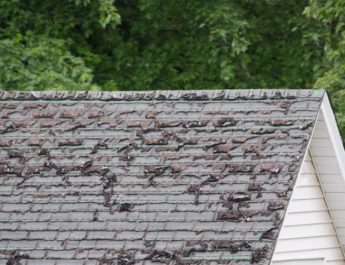If you are in need of a roof replacement in Dearborn Michigan, the whole process can be a bit overwhelming. From finding the right professional roofing contractor in Dearborn Michigan for the job to finding the money to complete it, there are plenty of things to do. But what actually happens when your roof gets replaced? In this post we’ll look at some of the key items that can influence the costs associated with a roof replacement and the actual procedure as to how it’s done.
Steps Involved in A Complete Roof Replacement in Dearborn Michigan
Replacing the roof on your home is a big project. While many of the professional roofing crews that install your home’s roof can do so in just a few days it is still a large project in which there are many unseen things and circumstances that can arise. Having an experienced roofer that is local to the area can certainly help but it’s also important to understand how these things can affect the roof and the costs of the roof installation. Here are some tips to get the best new roof for your Dearborn Michigan home:
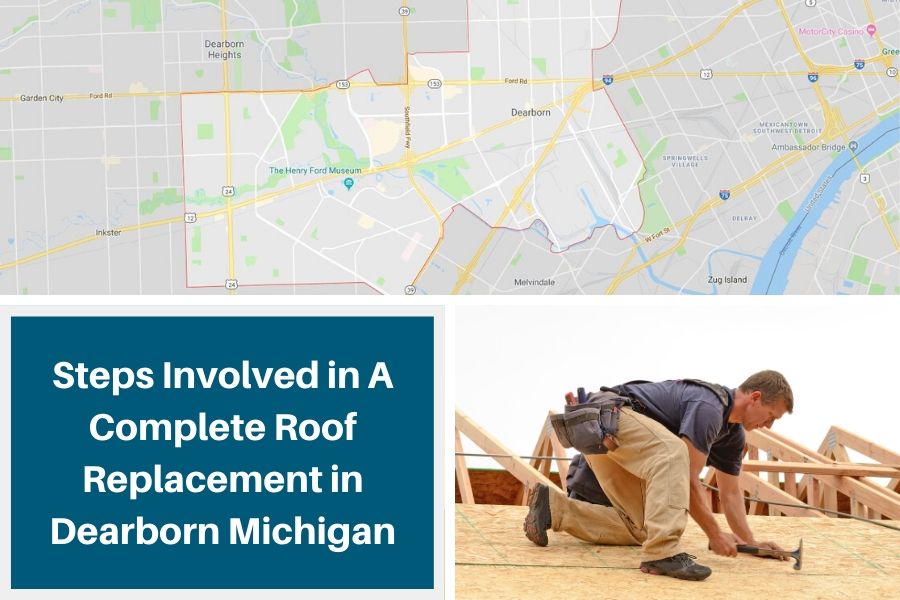
Before the Replacement Starts
Before you can start the actual process of replacing your roof, you need to first find the right person for the job. You should look for a local professional with lots of experience replacing roofs and plenty of references. They should be licensed and insured, and you should confirm that this information is current. Find several people you like and get quotes to find the right price. You should then write a thorough contract detailing what needs to be done, what materials are going to be used, a timeline for the work, and payment plans.
One of the best roofing contractors in Dearborn Michigan is Roofing Dearborn. They are fully licensed and insured and are also endorsed by a major roofing manufacturer (GAF). Give them a call today at 313-209-6350 for a free quote on your roofing project. They can also offer financing for your new roof if needed.
You also need to get your finances together to pay for the replacement. Once the down payment is made and contract is signed, you should then start to prepare your home. This includes removing vehicles, toys and patio furniture away from your home and out of the work area. Mark outlets with bright markers to make them easy to use, and secure items in your home that may become loose and fall while work is happening.
During the Replacement
When the replacement is actually happening, the roofing contractor will need to do several things. Luckily, you will not need to be part of this and can wait out the work. But it is recommended that you remove children or pets that may become upset while the process is happening.
The contractor will need to:
Remove Existing Coverings
Whether it is shingles, tiles, or metal sheeting, the existing covering is always the first thing to come off. In a roof recovering, you simply install new shingles over current ones. But a replacement requires you to remove everything down to the decking.
Tear Away Decking and Underlayment
The decking and underlayment will need to first be inspected and a professional will determine whether or not the materials are strong enough to stay in use. Otherwise, they will need to be removed and then replaced.
Secure Any Weak Spots
A professional will also inspect the structural supports and attic to make sure everything is intact and damage free. If there is damage, you may need to have them replaced or repaired as well.
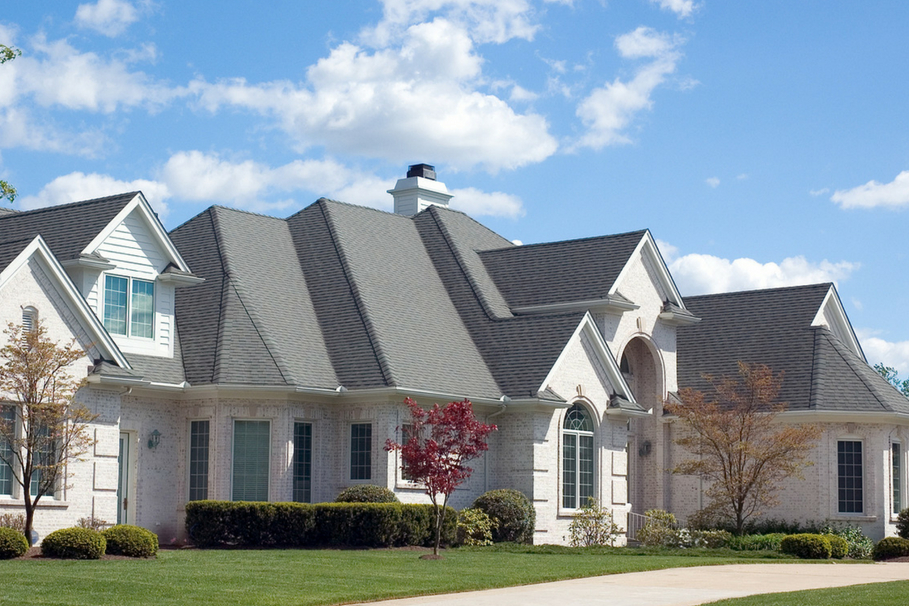
Install New Materials
When everything is deemed safe and ready, your roofing contractor can then install the new materials. The first step is the decking, then underlayment to prevent moisture from getting in. finally the covering is applied. If you choose shingles, make sure that the professional applies the sub layer first and doesn’t skip any steps.
Don’t Forget the Details
Once the roof is installed, you then need to install all the additional features that keep your home safe. Flashings are a necessity to help prevent moisture from getting in. They are installed around the chimney and skylight perimeter to block water from getting in. drip edges, ice dam protection, gutters and even reflective coatings should all be added on at the very end.

